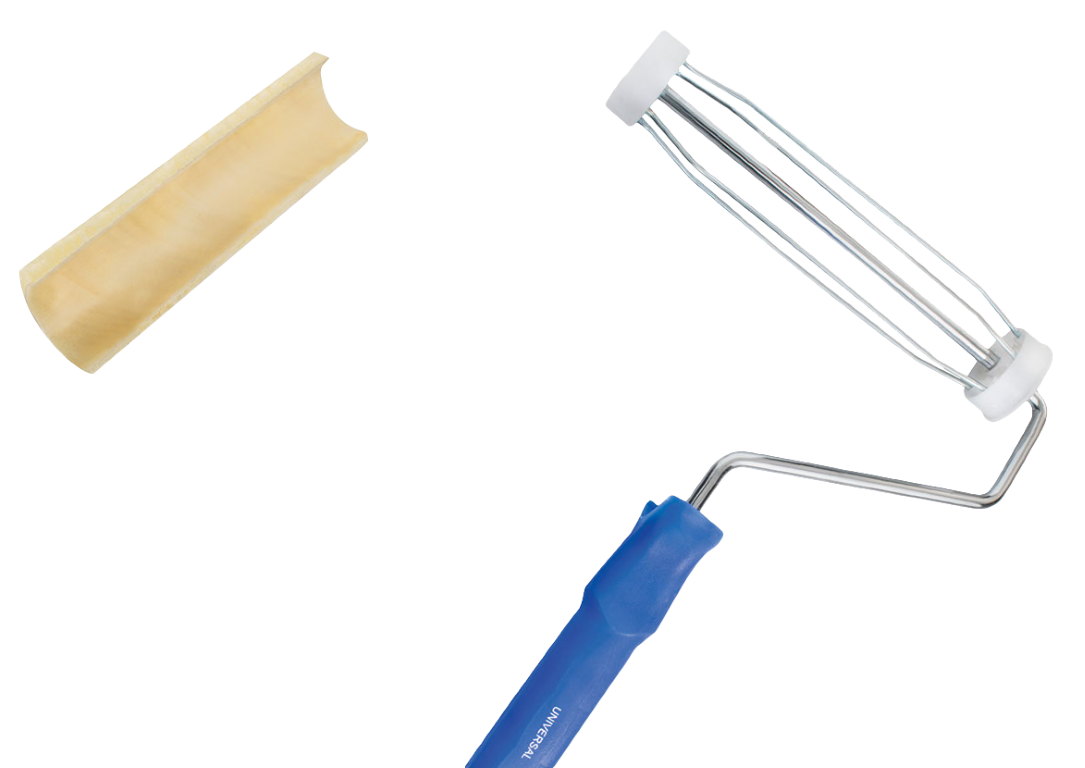How To Recognize A Professional Product
There are a LOT of paint tools available in the market and it can surely get confusing when deciding which ones to purchase! Make sure you know how to differentiate a good product from a bad one - it's actually easier than what you may have thought! Use these tips below to ensure you always bring home a quality product to help give you that perfect professional finish.
FILL WEIGHT
Pinch the filaments to see how well the brush has been filled. Too little fill weight in the brush will lead to Fish Mouth-causing paint splatter as there will be less control. Found in low quality brushes to reduce cost.
FILAMENT ENDS
The best professional paintbrushes are tapered to a fine edge to further improve cutting, coverage and finish. The tips of the filaments will also be flagged. Un-tapered or level filament reduces the price of the brush, but sacrifices capacity, coverage and control. Look for a smooth feel of the filaments on the top of the brush. The softer the feel the smoother the finish.
FILAMENTS LEVELS, MIXING & FILLING
A brush which has greater variants of filament lengths will bend more gradually in response to brush pressure, allowing finer control and less paint splatter. Make sure the filaments have been filled in a straight line and the appearance of the brush looks linear. Good filling of the brush will not have any diagonal or angled filaments in the head of the brush.
FERRULE
The metal band that holds the filament and handle together and helps give form to the brush. Attached by nails. Since brushes interact with water, it is essential that a professional paint brush use rust proof metals such as stainless steel or rust resistant platings such as nickel & copper.
EPOXY
High grade adhesive that locks filaments firmly in place. An indirect way to test filament bonding with ferrule is to check for filament shedding. Make an 'L' shape by stretching out your index finger and thumb. Use your thumb bang the heel of the brush several times. Then glide your hand over the brush head to see if any lose filaments are released.
SPACER
Well placed plastic or wooden strips that create a reservoir to carry paint and improve pick-up & release. Good spacers do not absorb moisture. This would make them expand to disfigure the brush.
COMFORTABLE HANDLE
Comfort is essential! The painter should never feel strain to his back, neck or arms, allowing him to easily spin to change working side with ease. Can be made of plastic, plastic and rubber or wood but finish is critical. Plastic handles should be made of strong plastic which will not crack if the rush is dropped. Rubber coated handles are soft provide comfort to the painter over prolonged use.
Keeper
Used to store, maintain & preserve the paint brush after use. Good keepers will have a tapered shape to help keep preserve the shape of the brush.
KEEPER

FABRIC DENSITY
High quality rollers will use thick & dense fabrics. Don't confuse this with pile height: which is the total length of the fabric piles from the root of the fabric to the tip. Short pile length rollers can also have very high density. As a general rule, short pile height are better for smooth finishes, medium for semi smooth, and long piles for rough and textured finishes.
ROLLER COVER
The puff should look like one continuous fabric, without any gaps. Having gaps will lead to an inconsistent finish on the wall. The starting point of the fabric onto the core is usually the weakest point on the puff. If it begins to unravel, the remaining puff will also unravel. Make sure it is strongly fasted to the core.
THERMO-BONDING
High quality rollers always use Thermo-Bonding to bond fabric onto the core. This technique heats the plastic core, melting it slightly & then quickly rolling the fabric onto it. This guarantees the highest bonding quality & lowers risk of fabric unwinding.
MECHANICAL CENTER - SPIN
Designed to roll smoothly over all surfaces and with all kinds of paints. The spinning of puff should be smooth, frictionless and not bumpy. This will give the painter comfort and control, and a uniform finish to the painted surface.
TWO STYLES AVAILABLE
5-SPOKE CAGE allows for the puff to be put firmly onto it, ensuring the puff does not unfasten from cage during use; & can be re-used with single puffs. STICK STYLE ROLLER: Reduces total weight of roller giving painter more comfort & less fatigue for long working hours.
ROD
Sturdy, chrome plated rod that connects the cage to the handle. Rod should be sturdy & made of hard steel so that it does not easily bend with use. High quality rollers rods will be chrome-plated to protect from rust making appearance shinny & uniform.
ROLLER COVER
KNITTED: Knitted covers are attached to the core by a single pass through. This is an 'open stich' process that creates good pick up, release & enhances coverage of the roller. WOVEN: Woven fabrics are individually attached to the core by two pass throughs. This 'double lock' produces a smooth & lint-free finish and shed-resistant performance in paints. CORE: Base of the roller cover. High quality rollers are made of Polypropylene: PP. PP cores are highly resilient, never lose their shape, and chances of breaking are extremely low. To check if core is PP, the material should look white in colour, clear & translucent.
COMFORTABLE & STURDY HANDLE
Handle should feel very comfortable when gripped by a painter without adding any undue strain to his neck, back, or arms. Should be made of strong high-quality plastic or rubber which will not crack if dropped. Examine plastic to check for any rough edges. Rubber coated handles are soft provide comfort to the painter over prolonged use. The more uniform and softer the handle the better the plastic quality. Should be compatible with an extension pole.